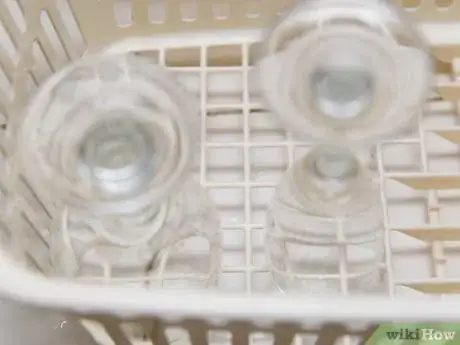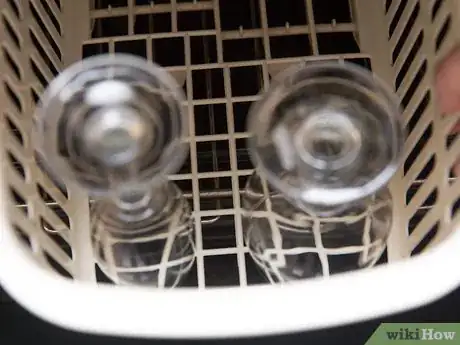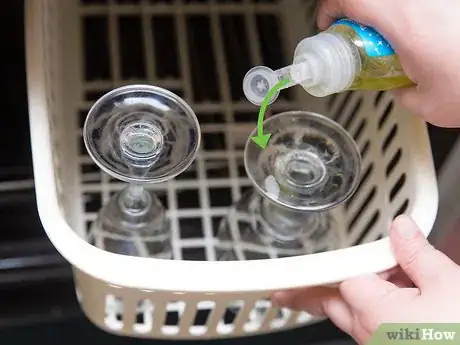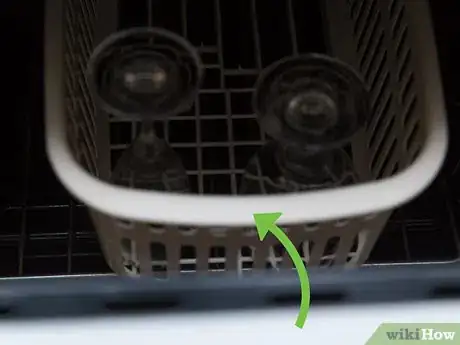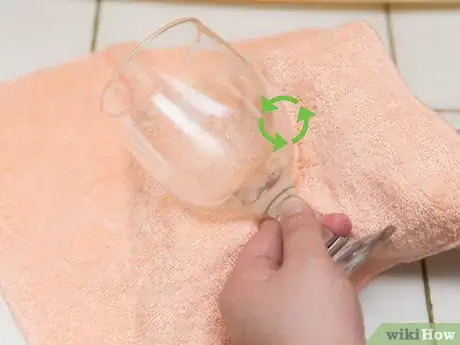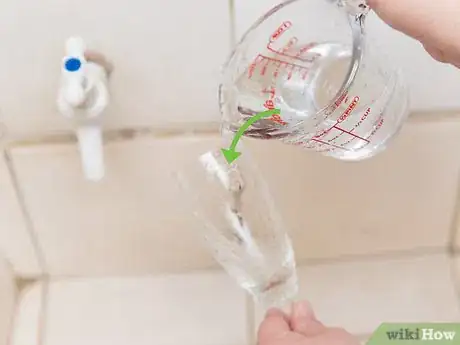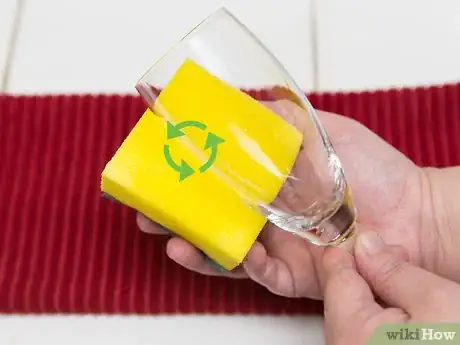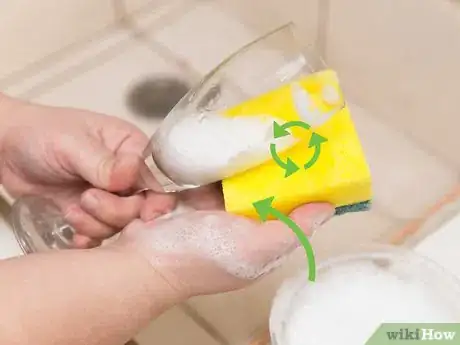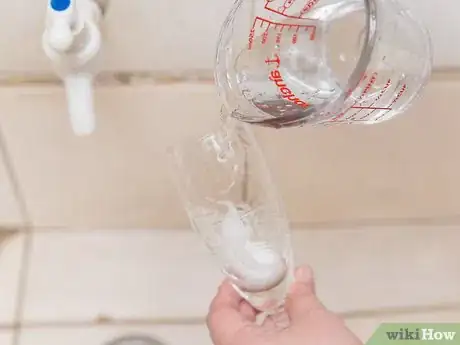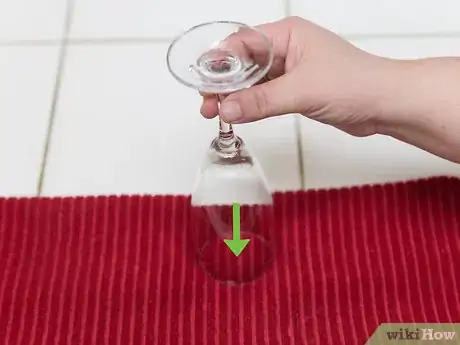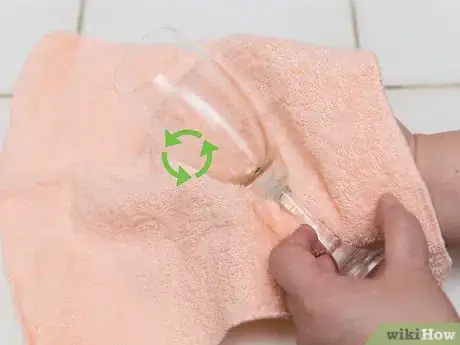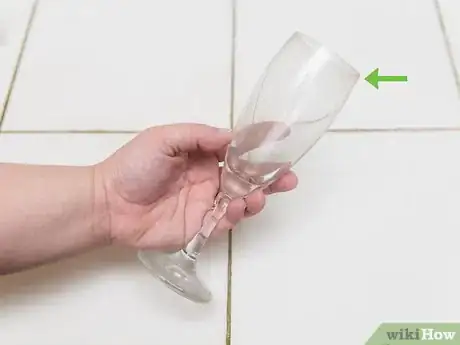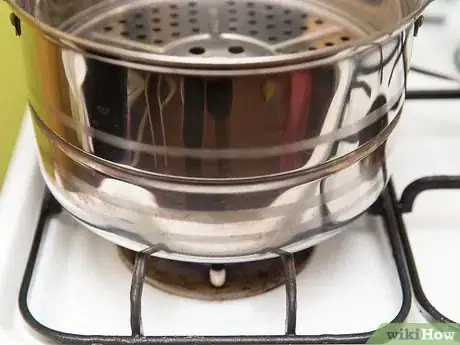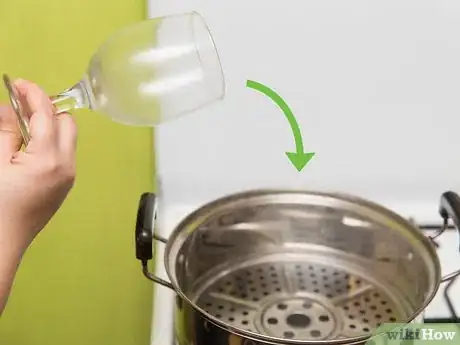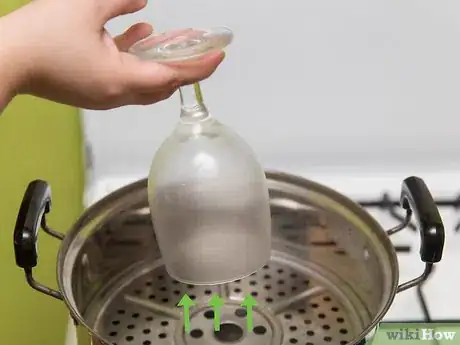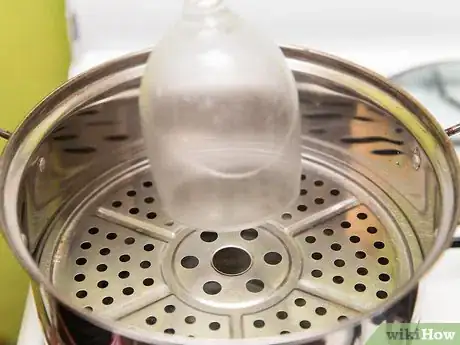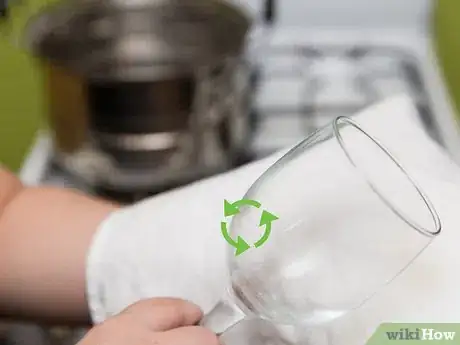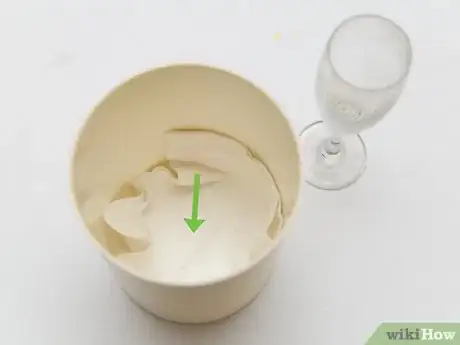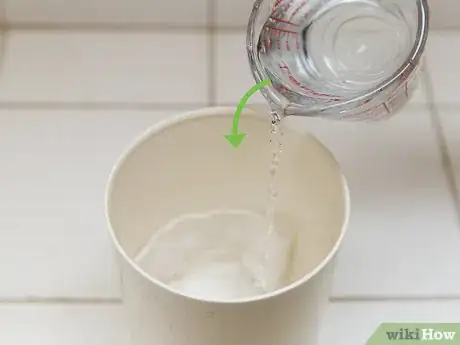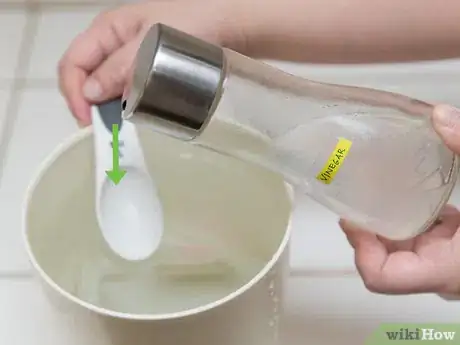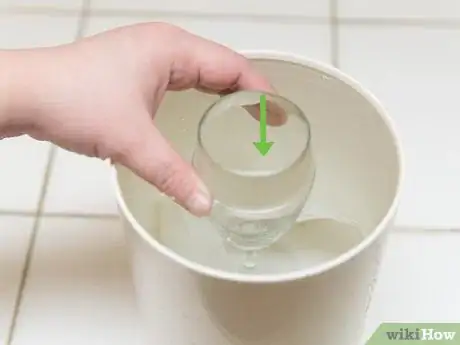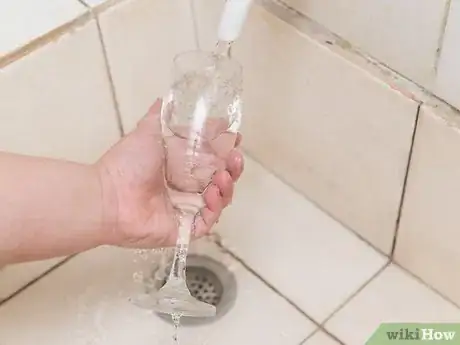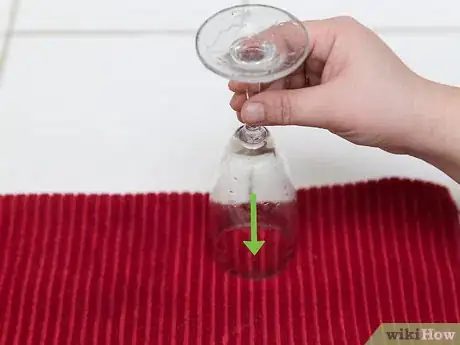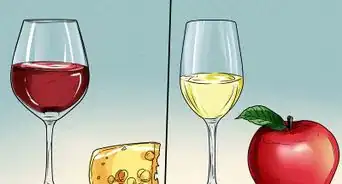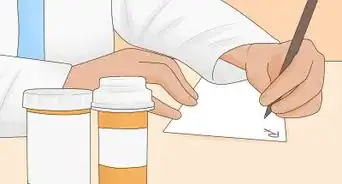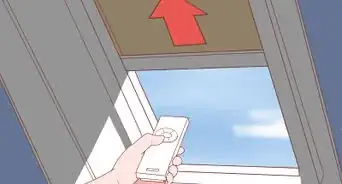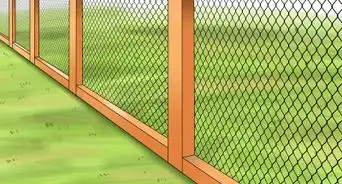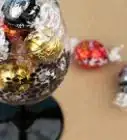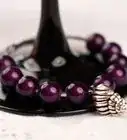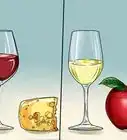This article was co-authored by Murphy Perng. Murphy Perng is a Wine Consultant and the Founder and Host of Matter of Wine, a business that produces educational wine events, including team-building experiences, networking events, and private parties. Based in Los Angeles, California, Murphy has served as a Wine Educator for clients such as Google, Buzzfeed, Tiktok, Snapchat, and Equinox and been featured on National Geographic and The Somm Journal. Murphy possesses her WSET (Wine & Spirit Education Trust) Level 3 Advanced Certification.
This article has been viewed 199,707 times.
Wine glasses are beautiful, and often very delicate. If your wine glasses are made out of crystal, they cannot be washed in the dishwasher like ordinary glasses, and will require extra special care. This article will show you a few different ways of cleaning wine glasses, as well as how to remove stubborn stains.
Steps
Cleaning Regular Wine Glasses
-
1Choose short-stemmed wine glasses made out of glass. Do not use this method for crystal wine glasses, or for wine glasses with long, delicate stems. Also, do not use this method for painted or glittered wine glasses.
-
2Plan on washing the glasses separate from the rest of your dishes. Do not load them in with anything that is very dirty or greasy. The grease can get on the glasses and smear them.Advertisement
-
3Place the glasses upside down on the top rack, and space them so that they are not touching. Try to have about a hands width between each glass. This will lessen the chances of the glasses bumping against each other and chipping.
-
4Use a small amount of odorless detergent. The less detergent you use, the better. Also, try to use a mild, low-alkaline detergent. Do not add any rinse-aid. Rinse-aid may help prevent water stains, but it will also leave behind a chemical residue that will affect the flavor of your next glass of wine.
- If the wine glasses are stained, consider adding half a wine glass of white vinegar into the wash cycle.[1]
-
5Use a short, gentle cycle. If you can, try to use a lower water temperature setting as well. The higher the water temperature, the more likely your wine glasses will be to crack.
-
6Skip the drying cycle. Instead, open the door at the end of the cycle to let the glasses air dry without humidity.[2]
-
7Dry the glasses by hand if you live in an area with hard water. Gently wipe them dry with a soft, lint-free cloth (such as microfiber), and put them away.
Cleaning Crystal Wine Glasses
-
1Hold the glass carefully by the bowl and not by the stem. The stem is fragile, and the glass can break easily if you hold it by that. Instead, cup your hand around the bottom of the bowl, with your fingers to either side of the steam.
- This method will also work for regular wine glasses.
- If you are cleaning painted or glittered wine glasses, use this method.
-
2Rinse the glasses in lukewarm to hot water. If the water is too hot for you, it is likely too hot for the wine glass; water can cause glass to crack if it is hot enough. Sometimes, this is all that is needed to clean the glass.
-
3Wipe the glass clean with a long-handled sponge. Avoid sticking your hand into the glass itself, or you will risk breaking the glass. Instead, find a soft sponge attached to a long, plastic handle. Focus your cleaning on the places that get the most dirty, such as the rim, the bottom of the glass, and the outside of the bowl.
- Do not use steal wool or a scouring pad.[3] Also, avoid using anything with stiff, plastic bristles. All of these can scratch the surface.
-
4Use a mild, odorless dish soap if needed. Usually, a simple rinse and light buffing with a soft sponge is all that is needed. If the wine glass is especially dirty, however, you might need to use a mild dish soap. You will not need a lot; a small drop will be enough.
- Try to use a low-alkaline detergent, if possible.[4]
-
5Rinse each glass well, inside and out, with hot water. Be sure to get rid of any soap residue. Crystal absorbs odors and flavors easily. If you don't rinse the wine glass well enough, your next glass of wine might have a slight soapy flavor.
-
6Place the wine glass upside down on a soft towel so that it can air dry. The soft cloth will help protect the rim from the hard surface of your counter or table.
-
7Dry the glasses with a soft, lint-free towel if you live in an area that has hard water. This will help prevent any hard water stains. Use a soft, lint-free cloth, such as microfiber.
-
8Know that some stains may be permanent. Crystal is a very porous material. It absorbs flavors and is easily damaged. If the crystal wine glasses have turned foggy because they were cleaned in the dishwasher at some point in time, the damage is permanent. The heat of the dishwasher would have baked the detergent into the glass.
Steam Cleaning Wine Glasses
-
1Bring a pot of water to a boil over the stove. Fill a pot with water and place it on the stove. Turn the stove on to high and wait for the water to begin boiling. This method is generally safe for wine glasses made out of crystal or glass. It may not be safe for painted or glittered wine glasses, however.
-
2Hold the wine glass upside down above the water. Slip the stem between your fingers loosely so that the base is resting on your hand.
-
3Wait until the steam covers the wine glass. If the steam is not covering the glass, try bringing it closer to the water. Do not let the glass touch the water, however, or it may crack.
-
4Wait a few moments, then take the glass away. The hot steam will have sterilized the glass.
-
5Wipe the wine glass off with a soft, lint-free towel. Choose a soft cloth, such as microfiber, and wipe down the inside and outside of the glass.[5]
Removing Stubborn Stains
-
1Line the bottom of plastic container with a soft cloth. The container should be large enough to fit your wine glass. The soft cloth is important, as it will help protect the wine glass from getting scratched.
- This method is great for glasses that have turned foggy. It is also good for tough wine stains.
- Do not use this one painted or glittered wine glasses. Soaking these glasses in water for long periods of time can cause the paint or glitter to flake off.
-
2Fill the bowl with warm water. Use just enough water so that the wine glass will be covered if you put it in.
-
3Add five tablespoons of white vinegar. The vinegar will dissolve any wine or mineral residue. If you can't find any vinegar, you can use some baking soda or washing soda instead. Make sure that the washing soda or baking soda are completely dissolved; any remaining specks may scratch the glass.
- Washing soda will help remove cloudiness, but it may not remove wine stains. Baking soda will work the same way, just not as well.
-
4Lay the wine glass down in the container. The wine glass should be completely submerged. If it isn't, add some more warm water.
-
5Wait one to two hours before removing the wine glass. This will give the acids in the vinegar enough time to dissolve the stains.
-
6Rinse the glass using fresh water. Hold the glass by the bowl. Do not hold it by the stem, especially if it is a crystal wine glass. The stem is very fragile, and may break. If the wine glass is still foggy, it is possible that the damage is permanent. Wine glasses, especially those made from crystal, often turn foggy if they are washed in the dishwasher.[6]
-
7Set the wine glass upside down on a soft, lint-free cloth to air dry. Spread the cloth over your table or counter. Set the wine glass upside down on it. If you live in an area that has hard water, you might want to dry the glass off by hand using a soft, lint-free cloth instead.
Expert Q&A
-
QuestionHow can I make my glasses sparkle again?
 Murphy PerngMurphy Perng is a Wine Consultant and the Founder and Host of Matter of Wine, a business that produces educational wine events, including team-building experiences, networking events, and private parties. Based in Los Angeles, California, Murphy has served as a Wine Educator for clients such as Google, Buzzfeed, Tiktok, Snapchat, and Equinox and been featured on National Geographic and The Somm Journal. Murphy possesses her WSET (Wine & Spirit Education Trust) Level 3 Advanced Certification.
Murphy PerngMurphy Perng is a Wine Consultant and the Founder and Host of Matter of Wine, a business that produces educational wine events, including team-building experiences, networking events, and private parties. Based in Los Angeles, California, Murphy has served as a Wine Educator for clients such as Google, Buzzfeed, Tiktok, Snapchat, and Equinox and been featured on National Geographic and The Somm Journal. Murphy possesses her WSET (Wine & Spirit Education Trust) Level 3 Advanced Certification.
Certified Wine Consultant Use a linen cloth to polish your wine glasses before using them to remove fingerprints, dust, and any residue that could affect the taste of the wine.
Use a linen cloth to polish your wine glasses before using them to remove fingerprints, dust, and any residue that could affect the taste of the wine. -
QuestionWhat is the benefit?
 Community AnswerThe benefit of cleaning wine glasses is that you have fresh, clean glasses that people want to use instead of dirty ones.
Community AnswerThe benefit of cleaning wine glasses is that you have fresh, clean glasses that people want to use instead of dirty ones. -
QuestionWhy should we use hot water?
 Community AnswerHot water kills bacteria, which there is a lot of in wine. Cold water does not kill bacteria, and in some cases causes it to grow faster.
Community AnswerHot water kills bacteria, which there is a lot of in wine. Cold water does not kill bacteria, and in some cases causes it to grow faster.
Warnings
- Avoid using bleach or anything scented to clean or dry wine glasses. The slightest odor residue can affect the taste of the wine.⧼thumbs_response⧽
- Never stick your hand inside the wine glass to clean it, especially if it is made of delicate crystal. The glass can easily shatter from the pressure. Use a sponge attached to a long handle.⧼thumbs_response⧽
- Never clean crystal wine glasses in the dishwasher. This can not only cause the glasses to shatter, but the heat can bake the detergent into the glass and turn it cloudy.[9]⧼thumbs_response⧽
Things You’ll Need
Cleaning Crystal Wine Glasses
- Crystal wine glasses
- Warm water
- Long-handled sponge cleaner
- Lint-free towel or cloth
- Mild dish detergent
Cleaning Regular Wine Glasses
- Short-stemmed wine glasses (made from glass only)
- Dishwasher
- Mild detergent
- White vinegar (optional)
- Lint-free towel or cloth
Steam Cleaning Wine Glasses
- Wine glasses
- Stove
- Pot
- Water
- Lint-free towel or cloth
Removing Stubborn Stains
- Plastic container
- Lint-free towel or cloth
- Water
- White vinegar, baking soda, or washing soda
References
- ↑ http://www.rcrcrystal.com/index.php?pag=182&lang=5
- ↑ Joanna Simon, Discovering Wine, p.25, (2003), ISBN 1-84000-732-X
- ↑ http://www.savoreachglass.com/articles/washing-wine-glasses-from-a-chore-to-an-art-form
- ↑ http://www.rcrcrystal.com/index.php?pag=182&lang=5
- ↑ http://www.savoreachglass.com/articles/washing-wine-glasses-from-a-chore-to-an-art-form
- ↑ http://www.mollymaid.com/cleaning-institute/kitchens/wine-glass-cleaning.aspx
- ↑ http://somethingturquoise.com/2013/08/27/glitter-wine-glasses/
- ↑ http://www.cleaninginstitute.org/clean_living/cleaning_wine_glasses.aspx
- ↑ http://www.savoreachglass.com/articles/washing-wine-glasses-from-a-chore-to-an-art-form
About This Article
To clean a wine glass, first rinse the glass off with warm water. Then, wipe down the glass with a soapy sponge, focusing on the rim and the base of the bowl. Rinse the outside and inside of the glass off with warm water. Immediately dry the wine glass with a clean dish cloth to prevent water spots. For a stained wine glass, fill a large bowl with equal parts warm water and white vinegar. Soak the glass for up to 3 hours in the vinegar solution. Then, rinse the glass off under warm water and dry it with clean dish cloth. You can also clean a wine glass in the dishwasher. Place it rim-down in the stemware portion of the dishwasher, then run a standard wash cycle with the machine set to the air-dry setting. This will keep your wine glass from weakening over time. To polish a wine glass, first fill a large bowl with warm, steaming water. Hold the wine glass upside down over the water and wait for the bowl to fill with steam. Then, gently wipe the inside of the bowl with a microfiber cloth, being careful not to apply too much pressure. Do the same thing on the outside of the glass and the stem, then let your wine glass air dry. To learn how to clean crystal wine glasses by hand or regular wine glasses in the dishwasher, read on!

